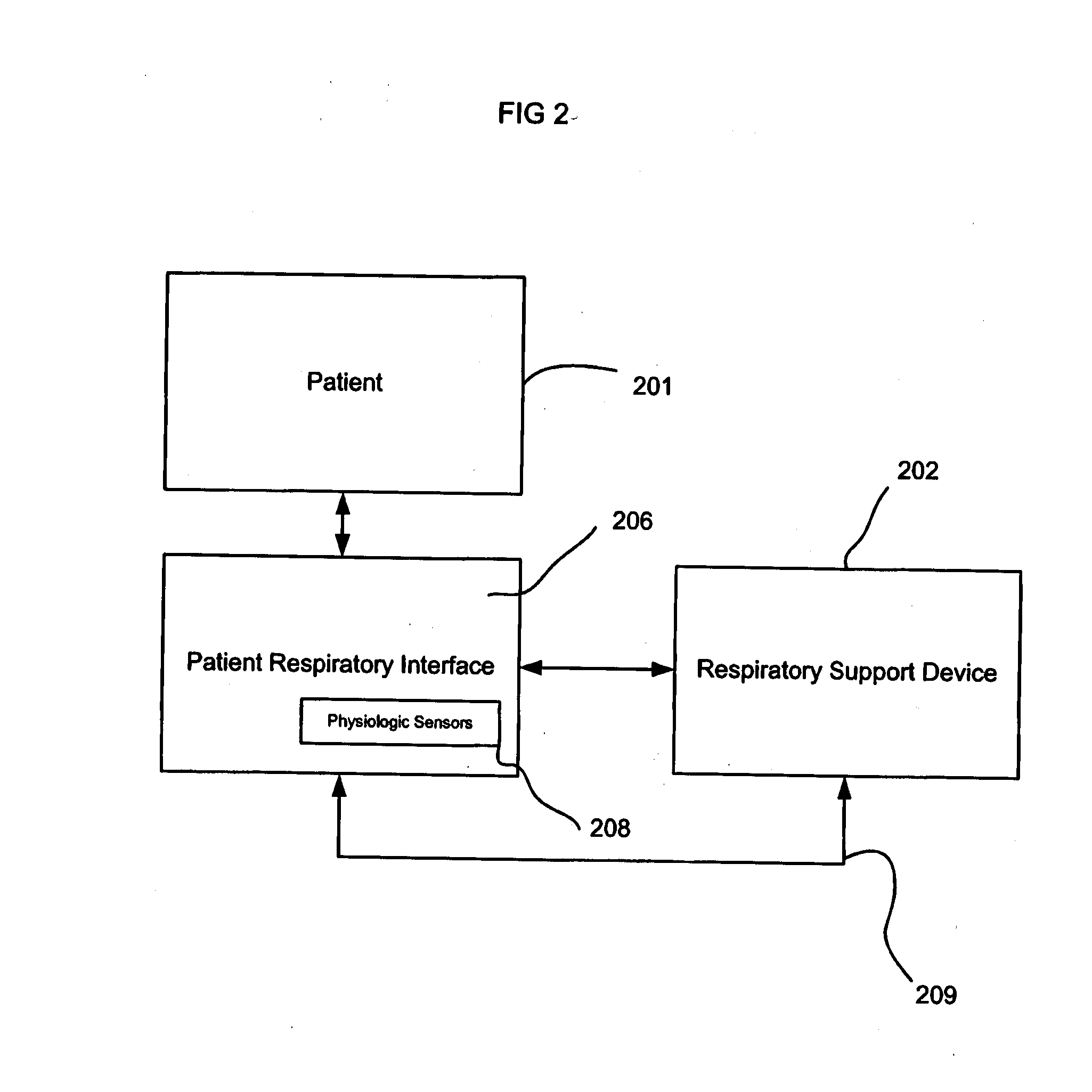Respiratory treatment system including physiological sensors
a technology of respiratory treatment and physiological sensors, applied in the field of physiological detectors, can solve the problems of increasing the severity of the condition of patients undergoing therapy with respiratory treatment apparatuses, difficult clinical management, and often suffering
- Summary
- Abstract
- Description
- Claims
- Application Information
AI Technical Summary
Benefits of technology
Problems solved by technology
Method used
Image
Examples
example methodology
[0140]FIG. 25 is a flow diagram illustrating a logic sequence executed by a controller integrated with, or attached to a respiratory treatment apparatus. At S101, a physiological sensor(s) obtains a reading. In the case of some electrochemical sensors, a chemical reaction may take place on the sensor, which may indicate the presence or absence of at least one analyte. The sensor then converts this signal into an electronic signal, representative of the information obtained from the chemical reaction. The sensors may be programmed to take readings at variable intervals and durations, depending on clinical need or based on a triggering event as previously discussed. After a reading is obtained, the signal is transmitted by wired or wirelessly (as described above), to the controller. The process proceeds to S108, in which the presence or absence, or quantity, of an analyte is detected. If no analyte is detected, the processor may direct the sensor to continue obtaining readings at S108...
PUM
 Login to View More
Login to View More Abstract
Description
Claims
Application Information
 Login to View More
Login to View More - R&D
- Intellectual Property
- Life Sciences
- Materials
- Tech Scout
- Unparalleled Data Quality
- Higher Quality Content
- 60% Fewer Hallucinations
Browse by: Latest US Patents, China's latest patents, Technical Efficacy Thesaurus, Application Domain, Technology Topic, Popular Technical Reports.
© 2025 PatSnap. All rights reserved.Legal|Privacy policy|Modern Slavery Act Transparency Statement|Sitemap|About US| Contact US: help@patsnap.com



